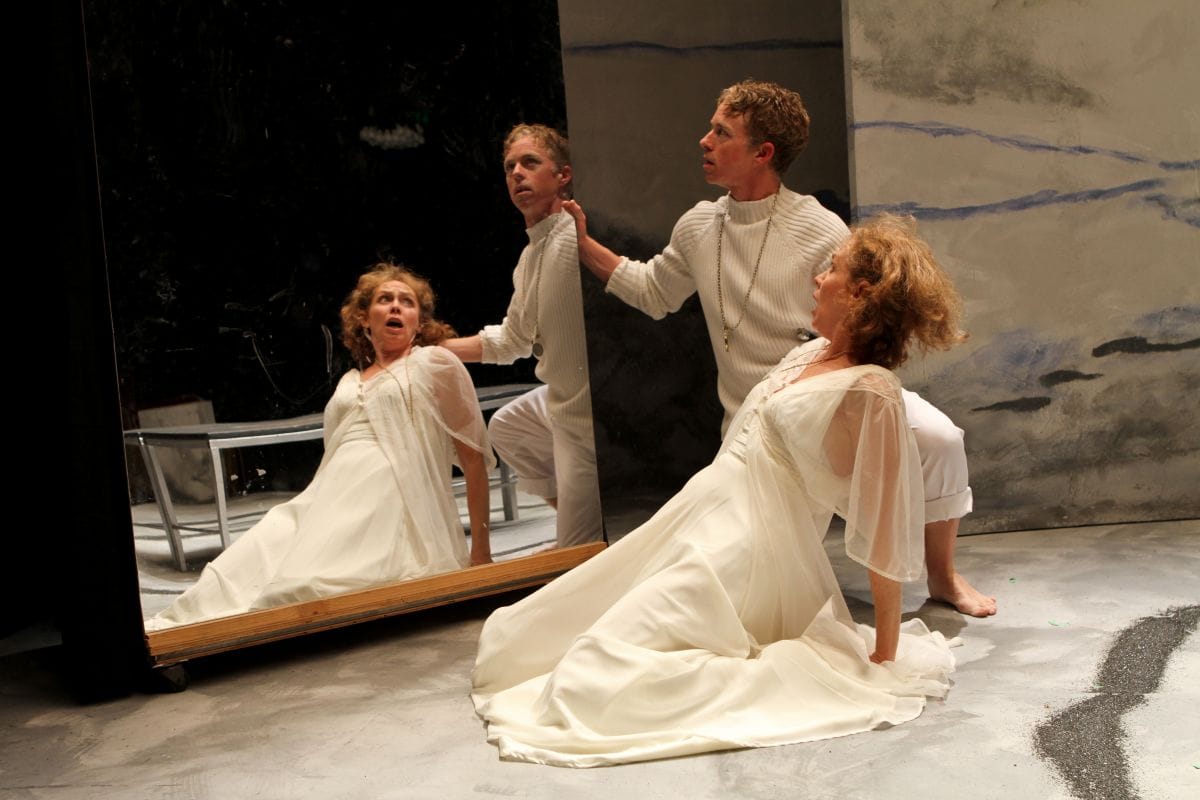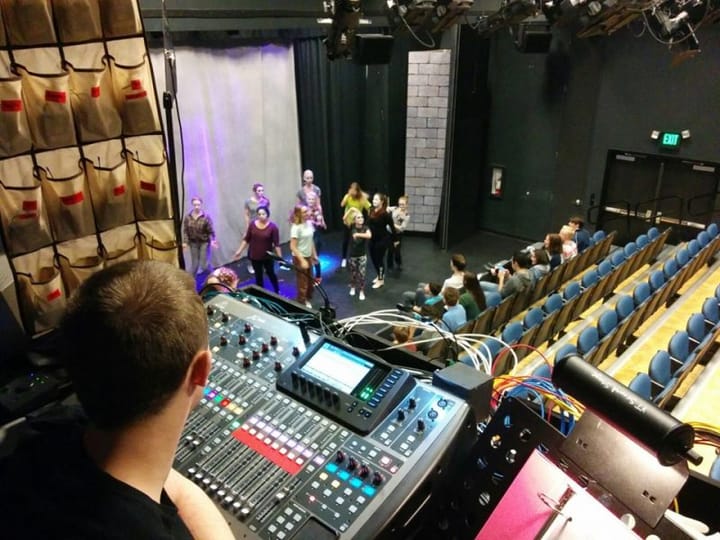Setting the Stage for Change
ACT Contemporary Theatre and Seattle Shakespeare Company forge a new future. | By Todd Matthews

When the house lights dim for Twelfth Night at ACT Contemporary Theatre in June, audience members might not realize they are witnessing a new chapter in Seattle theater history. The performance will represent the first production of the Union Arts Center, a merger between ACT and Seattle Shakespeare Company, which was first announced last year and is slated to be formally finalized later this summer.
It seems like an odd mash-up of one theatre company devoted to producing plays written 400 years ago and another theatre company that literally has the word “contemporary” in its name. ACT has only staged four Shakespeare plays in its 60-year history: As You Like It (1977), Henry IV, Part I (1978), King Lear (1985), and Romeo and Juliet (2019). However, the merger makes sense to the leaders of both theatre companies for several reasons, with good storytelling paramount.
“The nature of the work, doing classic and contemporary theater, is a complementary rather than a competitive relationship,” explained Seattle Shakes executive director John Bradshaw. “We continue to do these [Shakespeare] classics because they still speak to us today.”
Modern Shakespeare interpretations are fashionable (think The Bed Trick at Seattle Shakes and Fat Ham at Seattle Repertory Theatre last year; Macbeth: A Rock Musical at Seattle Public Theater in 2023; and Teenage Dick at Seattle Repertory Theatre in 2022). Bradshaw recalled something former Seattle Shakes artistic director George Mount often said: These are not bugs trapped in amber. They’re still living, breathing pieces of work.
“There are certainly a lot of things happening right now that feel very Shakespearean in our society,” added ACT interim producing artistic director Elisabeth Farwell-Moreland. “This idea of what’s classic and what’s contemporary is all about what speaks to us now. Contemporary doesn’t always need to mean brand new.”

Beyond a mutual affinity for good storytelling, the merger also has practical and operational benefits. Since 2001, Seattle Shakes has shared the 195-seat Carleton Playhouse, also known as the Center Theatre, with several resident companies, making it a busy, crowded venue in high demand. Meanwhile, over at ACT, which has operated inside the historic Eagles Auditorium Building downtown for nearly 30 years, five theater spaces with seating capacities ranging from 60 to 435 were underused.
“It made sense to have this conversation, with the idea that [ACT] could provide Seattle Shakes with a home and enliven that space and downtown all that much more,” said Bradshaw, who recalled working at ACT’s box office during the 1980s, when the theater was located on Lower Queen Anne, in a building now home to On The Boards.
Also, both companies were hiring for artistic leadership positions. Combining resources might put them in a better position to weather political and post-pandemic challenges, from a decline in audience attendance to threats to arts funding, which many theatre companies face nationwide.
“The plan made perfect sense to me, especially with theaters closing or pausing,” said Farwell-Moreland, who stepped into the artistic director role on an interim basis after Langs left ACT to become dean of the University of North Carolina School of Drama last summer. Coincidentally, Farwell-Moreland’s father, Jonathan Farwell, performed in ACT’s productions of Arsenic and Old Lace (1966), The Fantasticks (1967), and Celebration (1969, and mother, Jo Farwell, performed in ACT’s children’s theatre program under the stage name Anne Walker during the late 1960s. “The first thing I thought was, ‘Somebody has come up with an incredible idea to keep these two great institutions going forward.’ I was very excited by it when I heard about it.”
ACT, which was founded in 1965, had 45 full-time employees and a $6.8 million operating budget in 2024. Seattle Shakes, which was founded in 1991 as the Seattle Shakespeare Festival, had 22 employees (several seasonal and part-time) and a $2.5 million operating budget in 2024.

The companies have crossed paths over the years. Langs directed several productions at Seattle Shakes—King Lear (2004), Merchant of Venice (2009), Hamlet (2010), Antony and Cleopatra (2012), Othello (2015), and Macbeth (2022)—while working at ACT. Local actors, directors, and designers have performed in ACT and Seattle Shakes productions. However, sharing talent is much different than combining the cultures of two storied theaters and creating a theatre company with a new staff structure, board of directors, and mission statement.
Both companies hope the merger benefits artists and audiences.
For artists, ACT’s contract offers higher wages for union actors and designers, and Eagles Auditorium Building hosts rehearsal halls, scene and costume shops, and theater spaces under one roof. Although the first couple of years following the merger will focus on finding a stable footing, the plan is to simultaneously stage shows on multiple stages, similar to the Oregon Shakespeare Festival, which would mean more work for artists.
There will be more opportunities for audiences to see a varied selection of shows, often with larger casts, which Shakespeare’s plays tend to demand. It’s also a chance for longtime ACT or Seattle Shakes subscribers to intermingle. “Our subscribers are going to look around and there may be different faces around them, people who are excited by different things,” said Farwell-Moreland. “That cross-pollination of our audiences just leads to a lot more conversation.”
For now, Union Arts Center is the legal name of the ACT and Seattle Shakes merger. In addition to creating a public-facing name, an initial board of trustees—seven members of each organization’s existing boards—have been meeting and engaging with stakeholders to plan for the new organization’s combined culture.
“During this transition, that group is gathering to get to know one another, talk about what we want to do to be a leg up when the merger is complete,” said Cynthia Huffman, chair of ACT’s board of trustees.

Ariel Rosemond, president and chair of Seattle Shakes’ board of directors, added, “We’re having meetings with two or three folks from different boards working together on a topic, thinking it through, and then seeing how we can support the staff leadership. It’s a lot of work, a lot of moving parts.”
Will the merger result in layoffs?
“The primary redundancy is that we will have one managing director and one artistic director,” Bradshaw said. “We’re still working through the staffing and how that’s going to fit together. We’ve had some people leave at Seattle Shakes. I’ve not filled those positions to lessen the impact of redundancies. We’ve been functioning with a smaller staff to make this work.”
In April, ACT and Seattle Shakes announced a five-show lineup for the 2025/2026 season: two Shakespeare shows (Shrew and A Midsummer Night’s Dream), two contemporary shows (The Aves by Jiehae Park and Frida…A Self-Portrait written and performed by Vanessa Severo), and a classic play (An Enemy of the People by Henrik Ibsen). Both companies hope to legally finalize the merger by July 1 and replace the placeholder “Union Arts Center” name with a public-facing name that embodies both theater companies. Bradshaw will become the managing director of the merged companies, and the search for a full-time artistic director will continue.
“We have been very conscious of respecting the audiences on both sides, with those of us from Seattle Shakes working with Elisabeth and her team at ACT in reading plays and very openly discussing the choices, options, and opportunities,” said Bradshaw. “It was a collaborative process choosing the season. I think we’ve come up with a really exciting season.”



